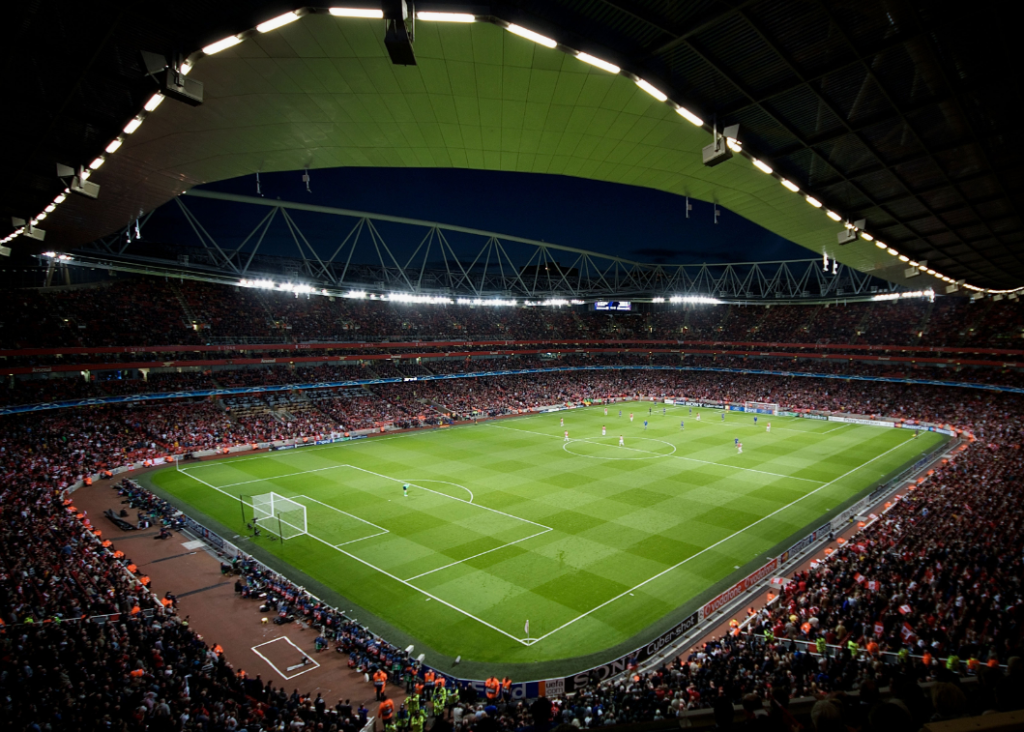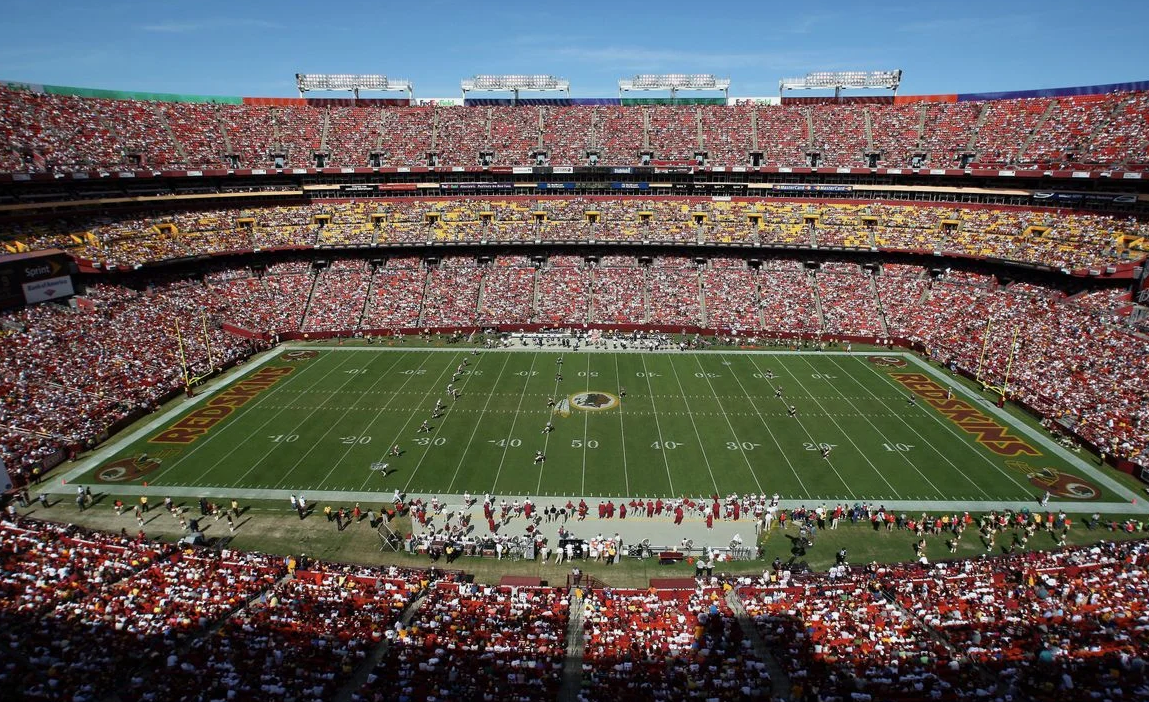Yes, a soccer field is bigger than a football field. The soccer field is larger. Soccer and football fields differ in size, with a soccer field being larger than a football field. The dimensions of a soccer field typically range from 100-130 yards in length and 50-100 yards in width, while a football field measures 120 yards in length and 53.
3 yards in width. The difference in size is due to the nature of the two sports, with soccer requiring more open space for continuous play, while football is designed for a more contained, structured game. Understanding the distinctions in field dimensions is crucial for players and fans alike, as it impacts the dynamics and strategies employed in each sport. Despite their differences, both fields play a vital role in providing a platform for athletes to showcase their skills and athleticism.
Is a Soccer Field Bigger Than a Football Field

Field Dimensions- Is a Soccer Field Bigger Than a Football Field
When comparing soccer and football fields, it’s crucial to understand the field dimensions of each sport. Let’s delve into the sizes of soccer and football fields to grasp the differences.
Soccer Field Size- Is a Soccer Field Bigger Than a Football Field
In soccer, the field size can vary slightly, but it typically ranges between 100-130 yards in length and 50-100 yards in width. The penalty area is 18 yards from the goal line, and the goal itself is 8 feet high and 8 yards wide.
Football Field Size
On the other hand, a football field is 120 yards long and 53.33 yards wide. The end zones at each end of the field are 10 yards deep, and the goalposts are 18.5 feet apart.
Playing Area
A soccer field is generally larger than a football field, with soccer fields typically measuring around 100-130 yards in length and 50-100 yards in width, while football fields are around 100 yards in length and 53. 3 yards in width.
This difference in size is due to the nature of the two sports and their specific playing requirements.
Comparing The Size of The Playing Areas
The playing area of a soccer field is larger than that of a football field. While the size can vary depending on the level of play, the standard dimensions for a soccer field are between 100-130 yards in length and 50-100 yards in width. In contrast, a football field is 100 yards long and 160 feet (53.3 yards) wide. This means that a soccer field can be up to 30 yards longer and 50 yards wider than a football field.
Measuring The Playing Area
When measuring the playing area, soccer fields are measured from the outside edge of the touchline (the boundary line) while football fields are measured from the inside edge of the sideline (the white line that runs along the length of the field). This difference in measurement can sometimes confuse when comparing the size of the playing areas.
Differences In Field Markings
Another key difference between the two playing areas is the markings on the field. Soccer fields have a center circle, penalty area, and goal area, while football fields have hash marks, yard lines, and end zones. These markings serve different purposes and reflect the different rules of each sport. In conclusion, while both soccer and football are popular sports played on a rectangular field, the size and markings of the playing area differ significantly. Soccer fields are larger and have different markings than football fields. Understanding these differences is important for players, coaches, and fans of both sports.
Goal Size
In terms of size, a soccer field is larger than a football field, with soccer fields typically spanning a greater area for gameplay. The dimensions of a soccer field are designed to accommodate the fast-paced nature of soccer matches compared to football games.

Soccer Goal Size
In soccer, the goal size is standardized at 8 feet high and 24 feet wide.
Football Goal Size
On the other hand, in football, the goal size is 10 feet high and 18.5 feet wide.
Field Markings
Field markings play a crucial role in distinguishing between soccer and football fields. These distinctive markings not only contribute to the strategic gameplay but also dictate the dimensions and rules of each sport. Understanding these markings can provide valuable insights into the differences between the two fields.
Distinct Markings on Soccer Field
The soccer field is marked with several distinct lines and areas that define the boundaries and specific zones for gameplay. The key markings on a soccer field include:
- Touchlines and Goal Lines: The outer boundaries of the field are marked by the touchlines (sidelines) and goal lines, forming a rectangular playing area.
- Penalty Area: This area, also known as the “penalty box,” is marked in front of each goal and is essential for penalty kicks and goalkeeper restrictions.
- Center Circle: Located at the midpoint of the field, this circle signifies the area where the game begins and restarts after a goal is scored.
- Corner Arcs: These curved lines demarcate the corners of the field, indicating where corner kicks are taken.
Distinct Markings on Football Field
In contrast, the football field has its own set of unique markings that cater to the requirements of American football. The prominent markings on a football field include:
- End Zones: These areas are located at each end of the field and are crucial for scoring touchdowns.
- Yard Lines: The field is horizontally marked with yard lines, facilitating the measurement of distance and indicating the line of scrimmage.
- Hash Marks: These small lines are used to determine the placement of the football for each play and are positioned at specific intervals across the width of the field.
- Goal Posts: Positioned at the back of each end zone, the goal posts are essential for scoring field goals and extra points.
Regulatory Bodies
Soccer Field Regulations
In soccer, the field regulations are governed by various regulatory bodies, including FIFA (Fédération Internationale de Football Association) and national football associations. The standard dimensions specified by FIFA for a soccer field are 100-110 meters in length and 64-75 meters in width, with additional regulations concerning the goal area, penalty area, and corner arc dimensions.
Football Field Regulations
On the other hand, football fields are regulated by organizations such as the National Football League (NFL) in the United States. The standard dimensions for an NFL football field are 120 yards in length and 53.3 yards in width, with specific markings for the end zones, goal line, and hash marks.
Player Movement
Player movement is a crucial aspect in both soccer and football. The size of the field directly impacts the players’ ability to cover ground, make strategic plays, and execute their game plan effectively. Understanding the impact of field size on player movement is essential to grasp the differences between soccer and football fields.

Impact of Field Size on Player Movement
Field size significantly influences player movement in both soccer and football. In soccer, the larger field allows players more space to maneuver, build-up plays, and cover ground efficiently. With the expansive field, players have more room to showcase their agility, speed, and tactical skills. On the other hand, football fields are comparatively smaller, leading to more intense, compact movements. The limited space demands quick decision-making, precise execution, and close interactions among players. The smaller field size in football enhances the physicality and rapid movements of the players, creating a dynamic and fast-paced game.
Conclusion
The size of a soccer field is indeed bigger than that of a football field. Understanding the dimensions of each field is crucial for players and fans alike. Whether it’s soccer or football, the field size plays a significant role in the dynamics of the game.

